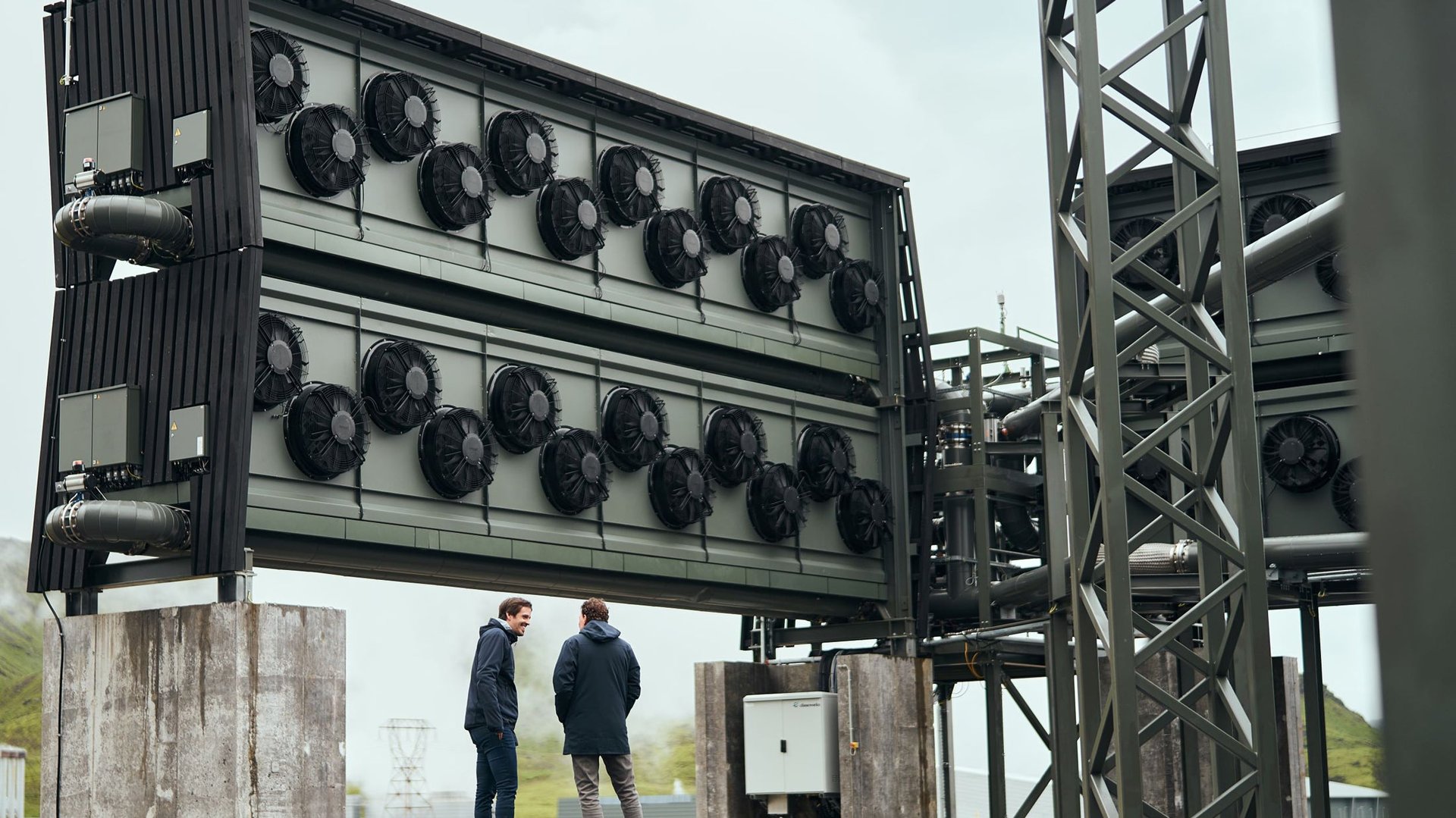The world’s biggest carbon-sucking machine is switching on in Iceland
We have to start removing carbon dioxide from the atmosphere to have any chance of averting the worst impacts of global warming, the Intergovernmental Panel on Climate Change said last month.


We have to start removing carbon dioxide from the atmosphere to have any chance of averting the worst impacts of global warming, the Intergovernmental Panel on Climate Change said last month.
The fossil fuel economy must be run in reverse, effectively. The simplest and lowest-cost way to do that—planting trees—requires a lot of land relative to the scale of intervention that’s needed. So a handful of companies have been tinkering with “direct air capture” (DAC)—essentially, big CO2-sucking machines.
The largest DAC plant in the world will open Sept. 8 in Iceland. Operated by the Swiss engineering startup Climeworks, the plant, known as Orca, will annually draw down a volume of emissions equivalent to about 870 cars. Orca will boost total global DAC capacity by about 50%, adding to the dozen or so smaller plants that are already operational in Europe, Canada, and the US.
The plant is composed of eight boxes about the size of shipping containers, each fitted with a dozen fans that pull in air. CO2 is filtered out, mixed with water, and pumped into deep underground wells, where over the course of a few years it turns to stone, effectively removing it from circulation in the atmosphere.
Direct carbon removal is still much too expensive
The Orca launch follows on the heels of a $10 million contract Climeworks inked last week with reinsurance giant Swiss Re. The insurance company was essentially buying an undisclosed volume of carbon offset credits to count against its own carbon footprint. Climeworks hasn’t publicly disclosed its price per ton, but a Swiss Re press release described it as “several hundred dollars.”
🎧 For more intel on carbon emissions, listen to the Quartz Obsession podcast episode on kudzu. Or subscribe via: Apple Podcasts | Spotify | Google | Stitcher.
This business model—the sale of offsets—is how Climeworks is approaching a key problem for the nascent DAC industry: How to make money. The alternative is to sell the captured CO2 to manufacturers who can use it as a raw material for cement and other products, or to oil companies that, ironically, use it to help dredge up more oil. But those customers are more accustomed to prices around $100 per ton.
Since the carbon offset market, as a whole, is riddled with cheap, dubious offsets, some emitters might be willing to pay top dollar, like Swiss Re (and Coca Cola and Microsoft, also major Climeworks clients), for a rock-solid offset. That capital, in turn, will help DAC scale and bring the cost down; experts predict it could reach $150 per ton in the next 5-10 years.
Orca will likely soon be dwarfed by competing projects in the US and Scotland that are expected to come online in the next two years. But even then, without much more public and private investment, the industry will be far from the 10 million tons per year that the International Energy Agency says are needed by 2030.